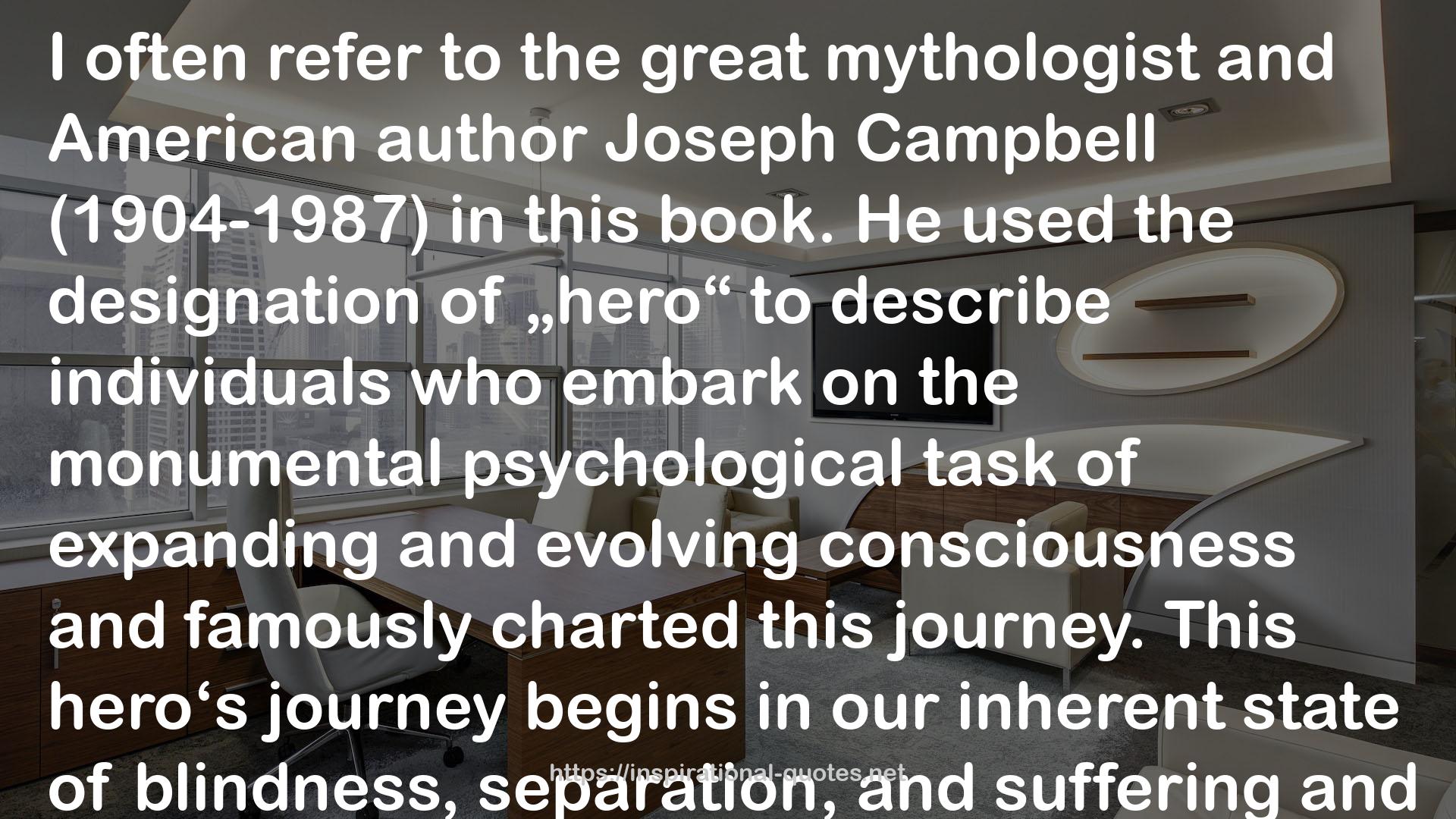" I often refer to the great mythologist and American author Joseph Campbell (1904-1987) in this book. He used the designation of „hero“ to describe individuals who embark on the monumental psychological task of expanding and evolving consciousness and famously charted this journey. This hero‘s journey begins in our inherent state of blindness, separation, and suffering and progresses on a circular (as opposed to linear) route made up of stages shared by myths and legends spanning all cultures and epochs. From Buddha to Christ, Arjuna to Alice in Wonderland, the hero‘s journey is one of passing through a set of trials and phases: seeking adventure, encountering mentors, slaying demons, finding treasure, and returning home to heal others.
Tibetan Buddhism‘s and Campbell‘s descriptions of the hero both offer a travel-tested road map of a meaningful life, a path of becoming fully human – we don‘t have to wander blindly, like college kids misguidedly hazed by a fraternity, or spiritual seekers abused in the thrall of a cult leader. The hero archetype is relevant to each of us, irrespective of our background, gender, temperament, or challenges, because we each have a hero gene within us capable of following the path, facing trials, and awakening for the benefit of others. Becoming a hero is what the Lam Rim describes as taking full advantage of our precious human embodiment. It‘s what Campbell saw as answering the call to adventure and following our bliss – not the hedonic bliss of chasing a high or acquiring more stuff, but the bliss of the individual soul, which, like a mountain stream, reaches and merges with the ocean of universal reality. (p. 15) "
― Miles Neale , Gradual Awakening: The Tibetan Buddhist Path of Becoming Fully Human
